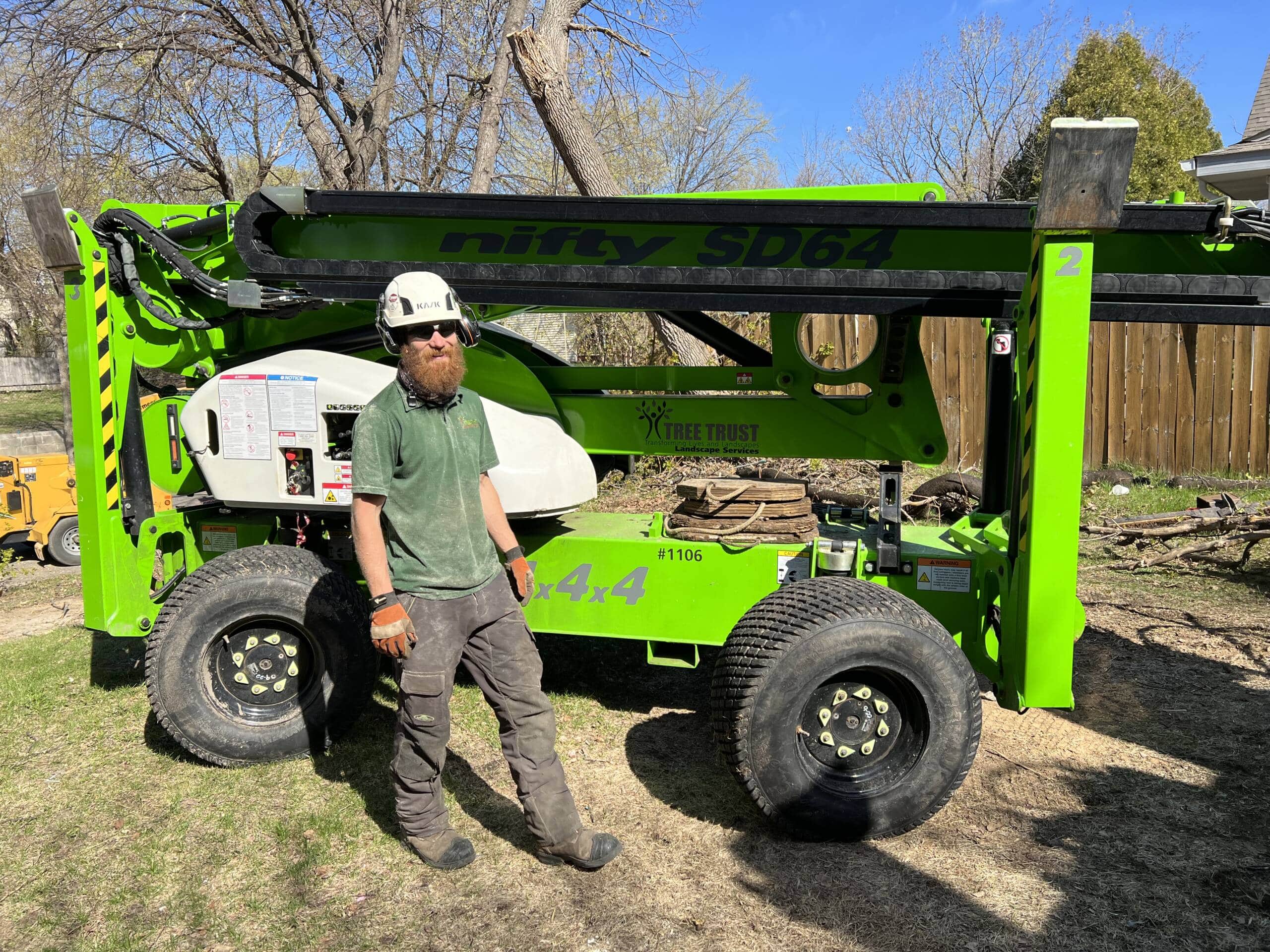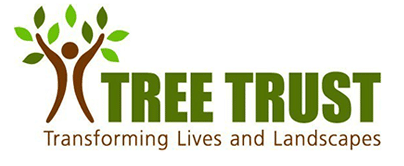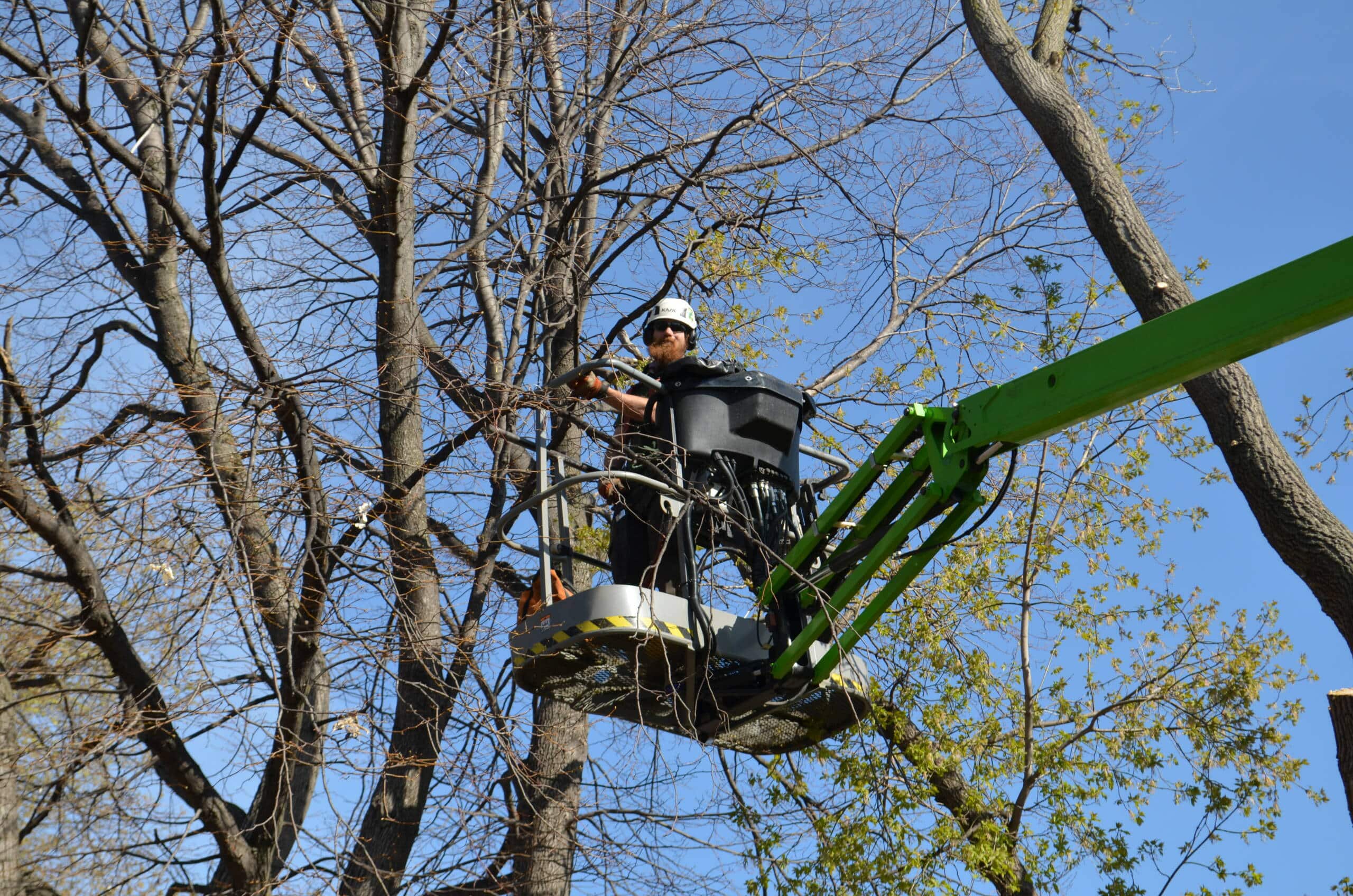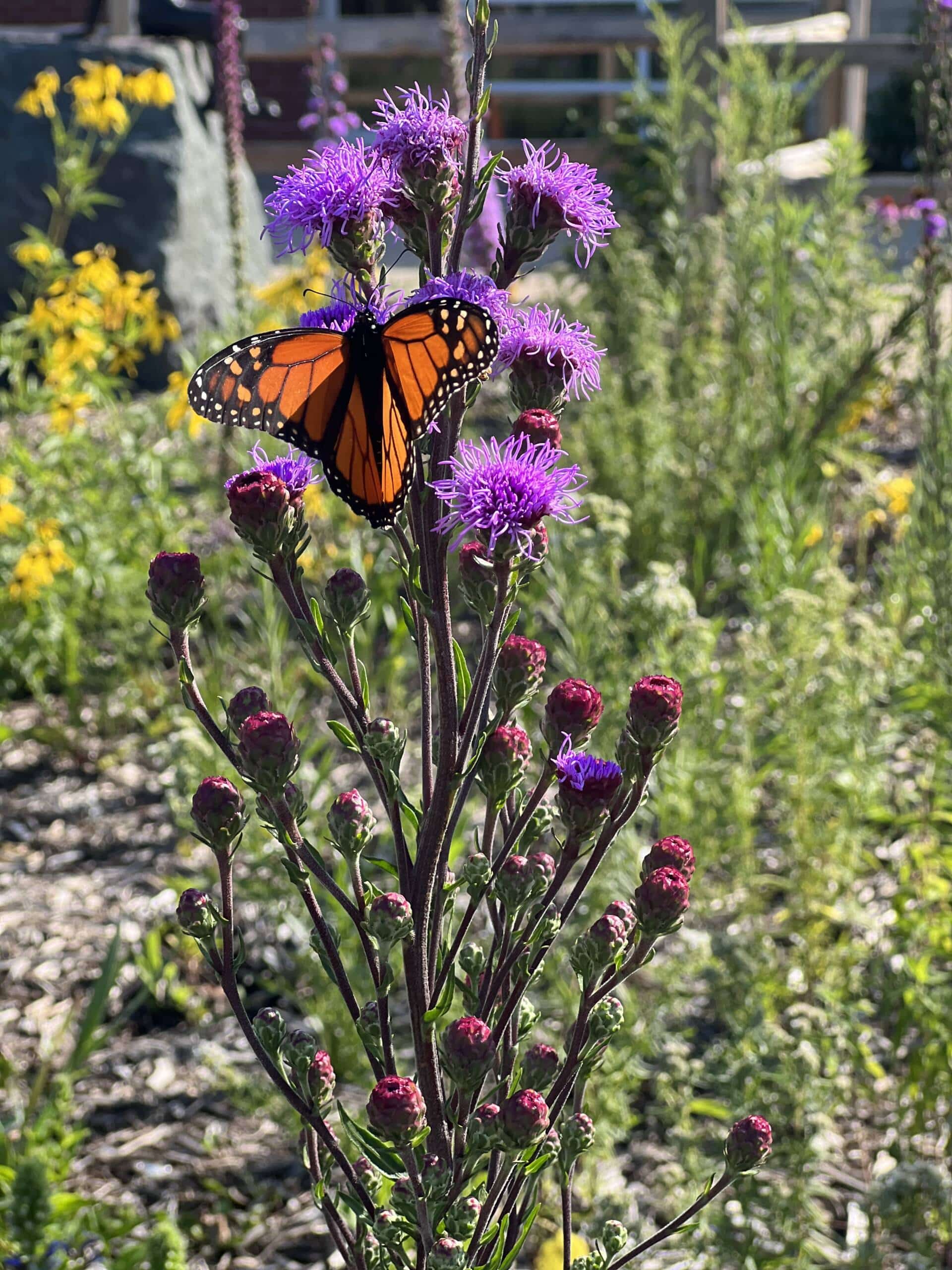
From Apprentice to Arborist
Scaling new heights, the life of an arborist is a delicate balance between nature, skills, and a passion for preserving the majesty of trees. Tree Trust Arborist Apprentice Dan Schmitter’s path to arboriculture was fostered by a desire to fully connect with Minnesota in every season. Applying his fervor for the outdoors and childhood love of climbing trees, Dan spends his days working aloft, high up in the canopy of his outdoor office.
Climbing the Canopy to Success: Dan’s Tree Trust Story
Beginning as a Tree Care Technician at Tree Trust Landscape Services, Dan is currently a Tree Care Supervisor and an Arborist Apprentice. He is receiving a competitive, full-time wage as he nears completion of the Registered Arborist Apprenticeship program — a combination of classroom and job site training. Dan’s first class in the program, Aerial Tree Work, catalyzed his ascent towards a fulfilling new career and he is looking up to a green future.
Did you always want to be an arborist?
I grew up with a love for nature and wanting to be outside. I always wanted to have a job where I was working outside. I went to school for wildlife biology, and I looked around for jobs related to conservation or ecologist positions but what I ended up landing on was finding something that I could do without having to relocate, and there was tree work everywhere. I knew I wanted to be doing tree care and I think it was within the first nine months of me working at Tree Trust as a Tree Care Technician that I was approached about the apprenticeship program. That’s when I really started taking off as far as my training and becoming an arborist, so to speak.
How has the Tree Trust Registered Arborist Apprenticeship Program benefited you both personally and professionally?
The first way that it immediately benefited me was accelerating my training. The very first class I went to was called Aerial Tree Work and every day in that class I was climbing trees, learning the basics of aerial tree work in a scenario where I wasn’t under pressure to produce, so it helped to just give me the time and space I needed to learn how to do it right and how to feel comfortable climbing a tree. As I got back to work in the field, I was able to just jump right into it and start doing some more straightforward climbing prunes, accelerating my training in climbing and with [tree care] work.
What is the best thing about working outside?
I really enjoy the change of season year to year. If I was inside every day, I would feel like I was missing out. I really enjoy being out in all kinds of weather and getting plenty of exercise every day. You never get bored of your workplace because it is constantly changing.
Do you have a favorite tree?
My favorite tree to climb is probably a burr oak. It’s gnarled and twisted and massive and spreading – it’s really interesting. They are a huge thing for wildlife. To get a little science-y with it, there are more species of Lepidoptera [moths and butterflies] in Minnesota that require oak trees for part of their life cycle than any other species of tree. So that’s another cool thing about oak trees. I also just love white pines, the way they look on the horizon along a lake.
What techniques do you use to assess the health of a tree?
For me, day to day it starts out basic. You can walk around a tree and look for visible roots at the surface level, [which is] a good sign. If you don’t see any root flare on a tree it means it’s been buried too deeply [and] that can cause lots of issues. Looking up into the tree, you can look for fungal fruiting bodies – basically mushrooms – that would be signs of decay, or other signs of decay like a big hole that’s full of water or rotting wood that is soft to the touch. In the summer you want to see vigorously growing leaves, dark green foliage, that’s like the proper size for that species. If you jump to the more technical side of things, there are tools to get a cross-section visual of the tree.
What programs or activities do you recommend for youth interested in exploring tree care as a career?
Being an arborist can be a really rewarding job. It requires a lot of hard work, and if someone is thinking about wanting to go into the industry, I would just encourage them to be willing to invest in it and work hard at it, because you will get out of it what you put into it.
Elevating Arboriculture – Training Future Arborists
Dan is currently climbing towards the culmination of his apprenticeship where he will achieve the nationally recognized arborist journeyworker credential. This important achievement catapults Dan to mentor status. The arborist journeyworker certification is officially recognized by the U.S. Department of Labor as the transition from student to teacher. Going forward, Dan will be qualified to train aspiring arborists.
The green industry offers many opportunities for young people to build the skills for meaningful, family-supporting vocations. The International Society of Arboriculture (ISA) hosts yearly tree climbing competitions that are open to the public for folks interested in experiencing the exciting green world of arboriculture. Career Pathways Programs Branches and Tree Trust YouthBuild both offer introductory tree care training for young people interested in exploring green careers.




